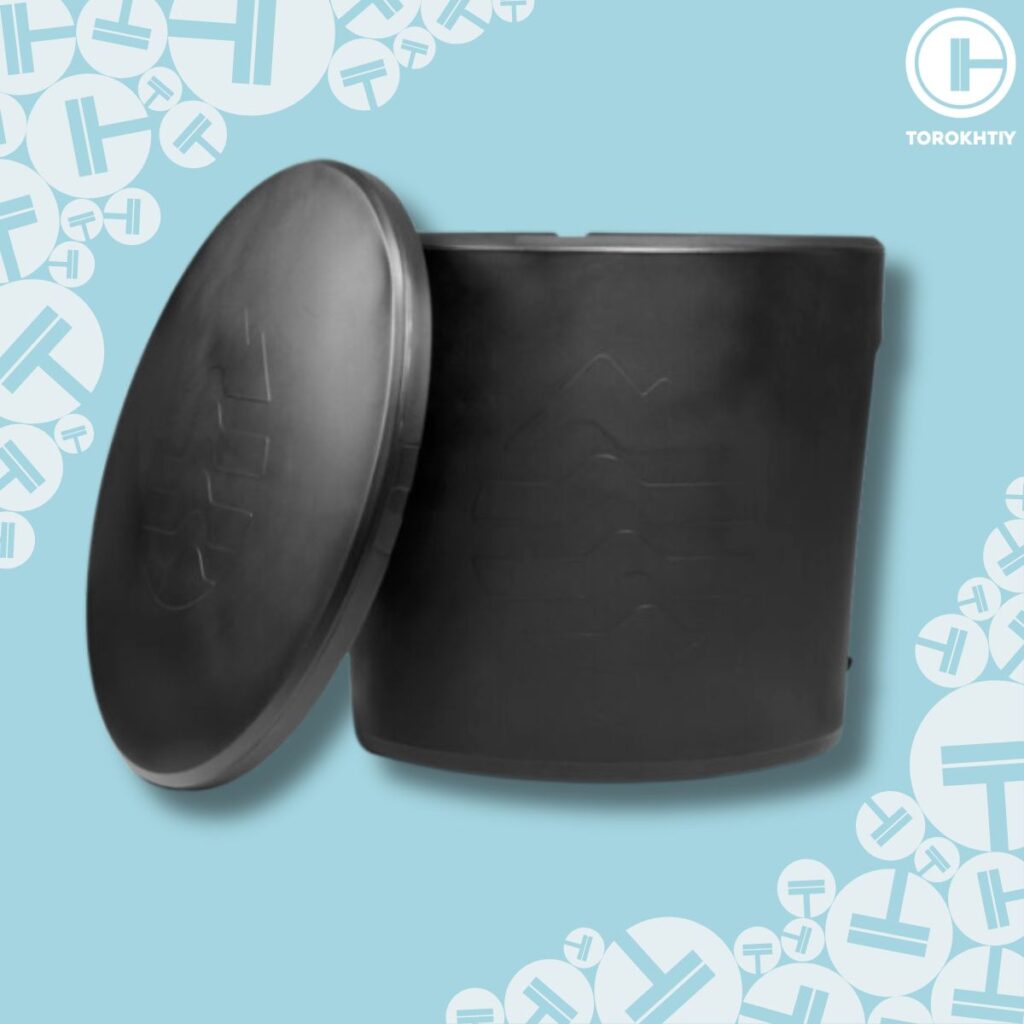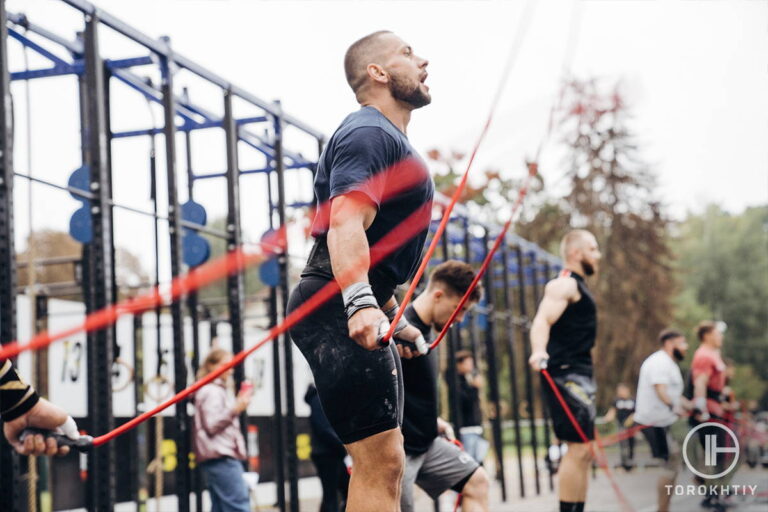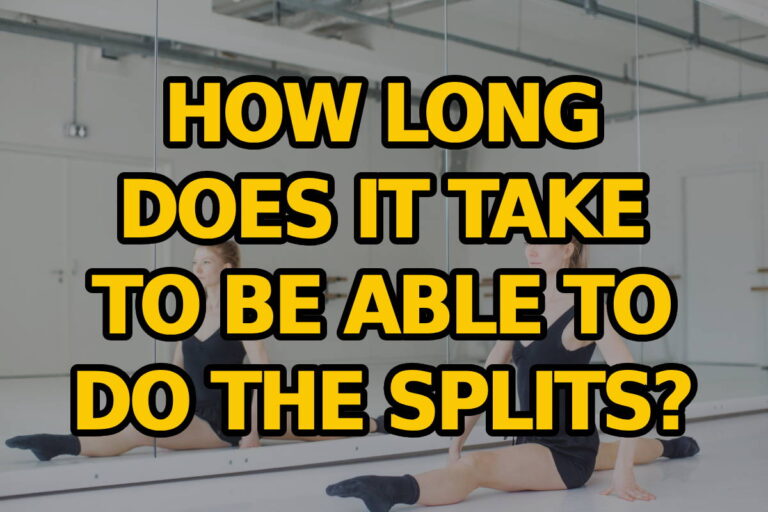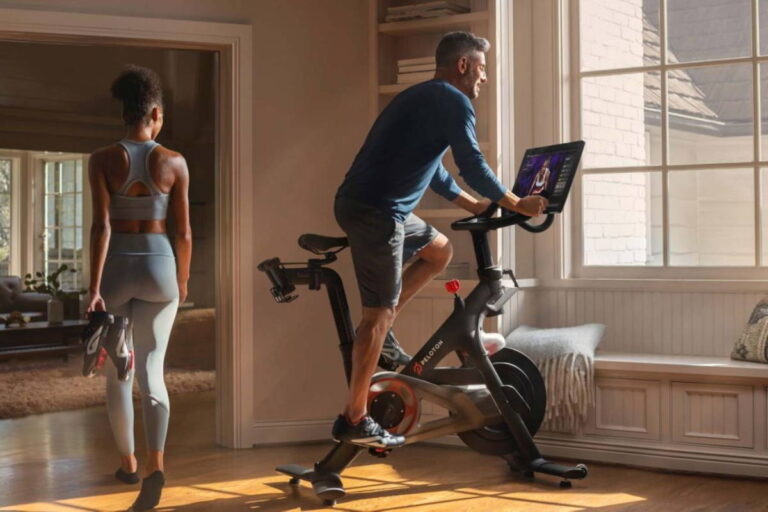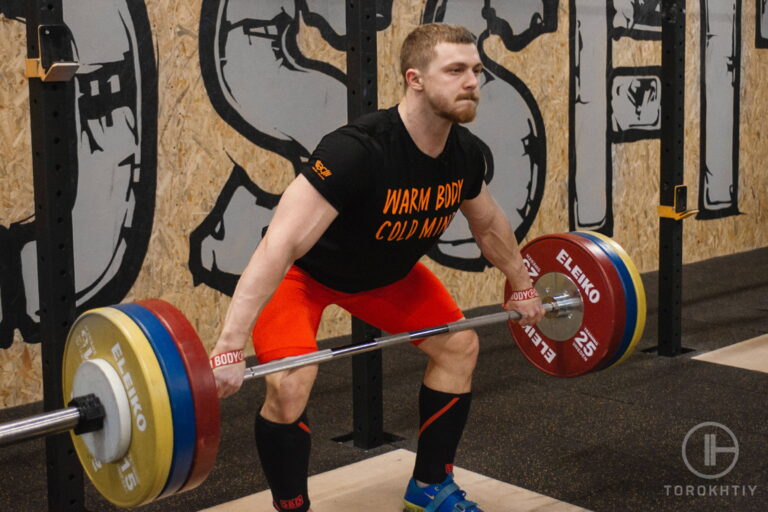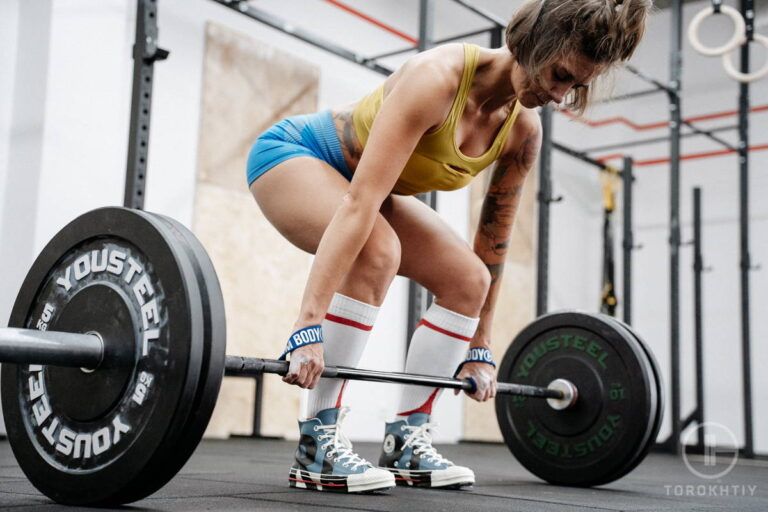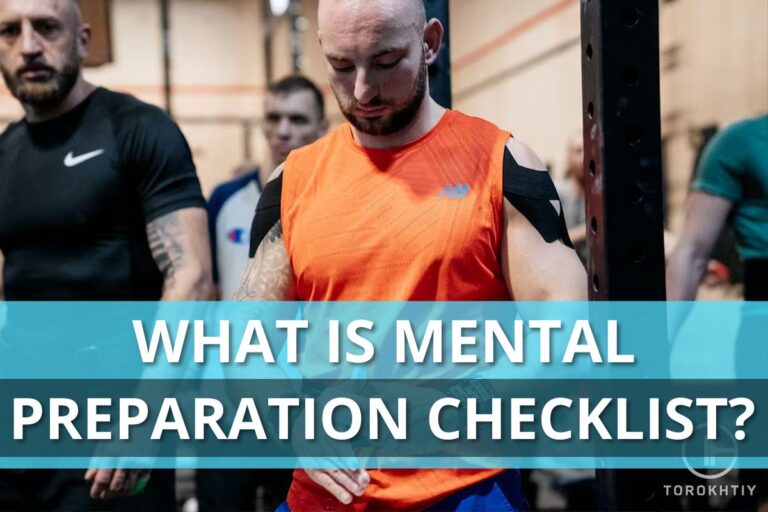How Long Should You Stay in an Ice Bath – Optimal Soak
Wondering how long should you stay in an ice bath? You’re not alone there; it’s a question a lot of people ask themselves because we all want the benefits, but if your soak lasts for too long, you could get in trouble. And if we’re being completely honest, ice baths aren’t famous for being comfortable, so why should you stay in one longer than you need?
Timing is everything. If you stay too short, you’ll miss out on the benefits. But if you stay too long, you risk the adverse effects of overexposure to cold. You want to find that sweet spot, so you get the rejuvenating power of an ice bath without compromising your health, and that’s exactly what we’re dealing with in this article.
Let’s dive right into all the chilly details and see how long should you ice bath!
How long should you stay in an ice bath? – Anywhere from 1-60 minutes based on exposure type (brief or long exposure). Brief exposure may last from 1-3 minutes, while long exposure may last from 30-60 minutes. But it depends on how well you can tolerate the cold; listen to your body.
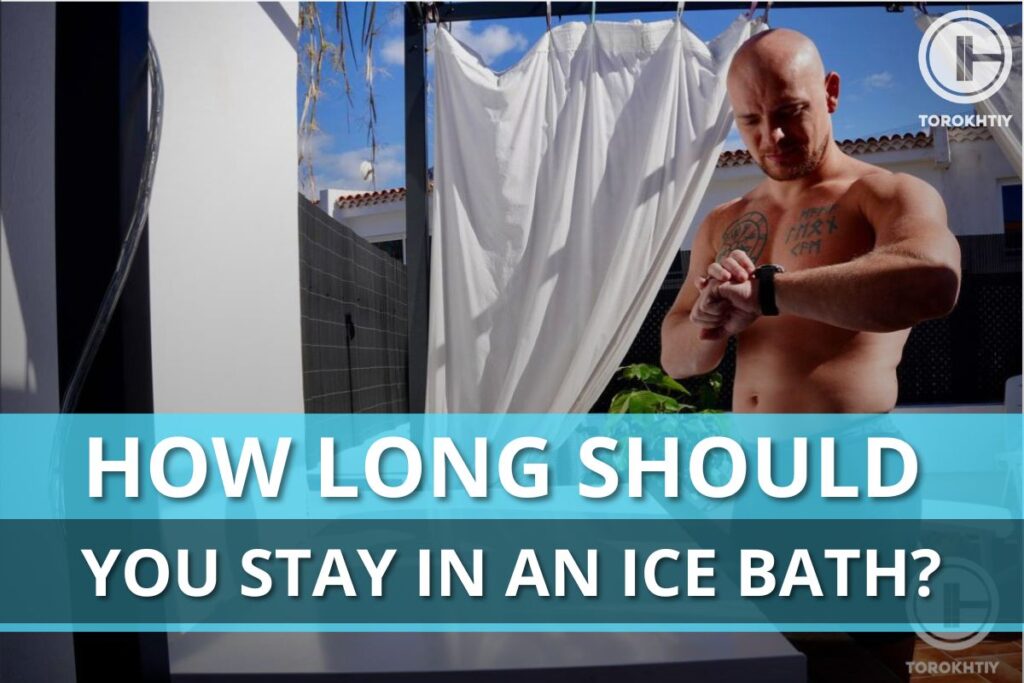
What is Ice Bath Therapy and How it Works?
Simply put, you get into a tub of really, really cold water and you try to stay there for longer than you want. You might be asking yourself who would want to subject themselves to this, but ice baths are very popular, especially with athletes and fitness junkies.
The concept behind ice bath therapy lies in the way your body responds to the cold. For example, when you expose yourself to cold water, blood vessels constrict and divert the blood away from peripheral tissues. This process can reduce inflammation and help with sore muscles by reducing the accumulation of metabolic byproducts. Cold can also activate your sympathetic nervous system response and release of catecholamines which also have plenty of benefits including mental resilience. mood boost and stress management.
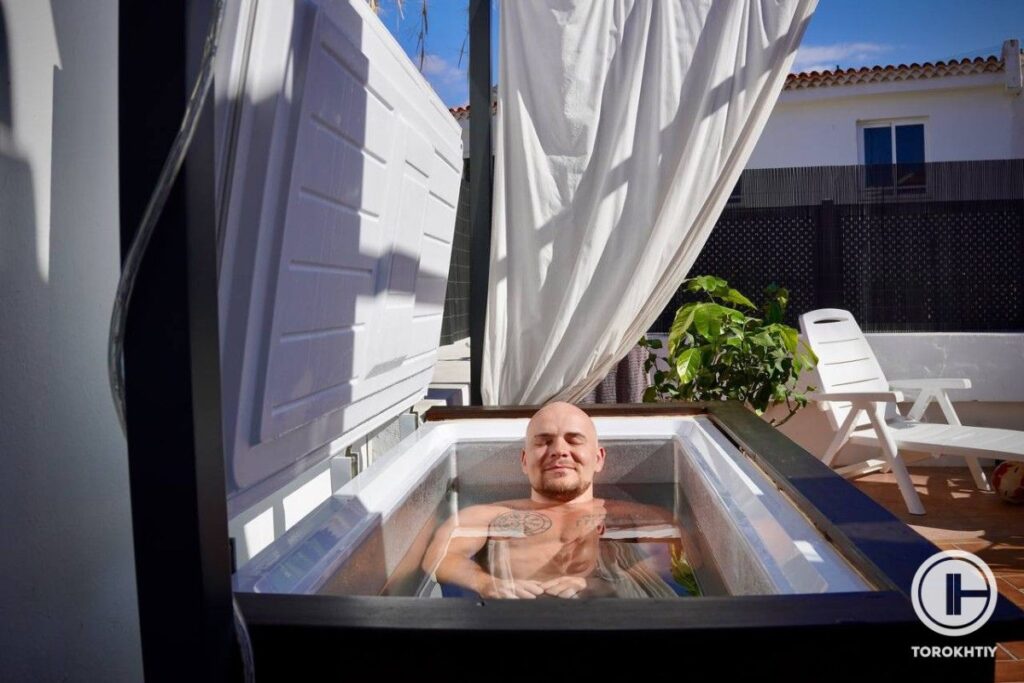
When you get out of the ice bath and start getting warm again, your blood vessels dilate, which improves the blood flow and nutrient delivery to the muscles. This cycle can help with removing waste products and promote recovery. Apart from your blood vessels constricting and dilating, being exposed to the cold water can temporarily numb nerve endings, which helps with pain and gives a sense of rejuvenation.
Ice bath therapy is usually used as a part of recovery strategy, and it complements factors like proper nutrition, hydration, and rest.
The Optimal Duration of Ice Bathing
Talking yourself into taking an ice bath is only half of the work. Once you get in, you need to know exactly how long to sit in the ice bath to get the benefits you’re after. The timing is different for everyone and depends on your personal needs, fitness level, and specific goals.
If you’re after general recovery after an intense physical exertion, the recommended time for an ice bath is based on the exposure protocol: brief exposure or long exposure.
| Exposure | Duration | Temperature | Frequency |
|---|---|---|---|
| Brief Dip | 1-3 min | 33.8-48.2°F (1-9°C ) | daily (if desired); 11 mins/week is a good benchmark |
| Long Dip | 30-60 min | ∼59°F (∼15°C) | 2-3 times per week |
This timeframe is a balance between reaping the benefits of ice baths without risking any adverse effects. You’ll see a lot of athletes spending this amount of time in an ice bath because it reduces soreness, inflammation, and helps with recovery overall. Of course, it’s important not to jump in an ice bath right after a workout; wait for at least 4 hours.
In case you want help with an injury or localized pain, a brief exposure (1-3 mins) will do the trick. You’ll get the benefits of an ice bath without sacrificing too much time for it. Regardless of what you’re trying to accomplish (pain relief, muscle repair, etc.), you don’t need to stay in an ice bath for too long because cold therapy is time-effective. That doesn’t mean that a 30-minute dip is bad, but it’s just not necessary to get the benefits you’re after.
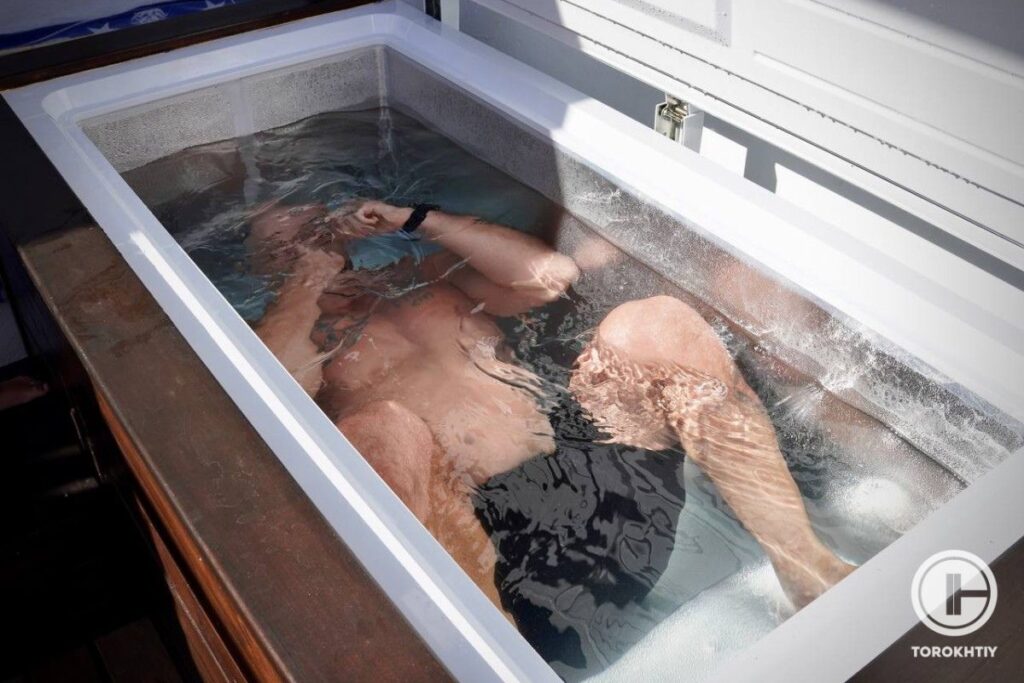
The rule of thumb is that the colder the temperature, the less time you need to spend in the ice bath. The water temperature should be cold enough so you don’t enjoy your bath and that you need to fight the urge to get out of it. You probably don’t want to hear this, but the whole point is being uncomfortable – that’s the idea of the cold stimulus. If it’s not cold enough – it won’t be uncomfortable and there will be less need for your body to react.
5 Possible Risks of Prolonged Ice Bathing
Ice baths may have a ton of benefits, but there’s another, not-so-pleasant side to it. If you take it too far and stay in an ice bath for too long (or you just take ice baths too frequently), you’ll be in a world of hurt because the risks are serious, and you shouldn’t take them lightly.
1. Hypothermia
The first thing that usually comes to mind with any kind of cold exposure is hypothermia. If you stay in an ice bath longer than you should, your core body temperature will drop, and that can lead to hypothermia. This can result in shivering, confusion, and even life-threatening complications.
2. Frostbite
Frostbite is about as pleasant as it sounds. Continued exposure to ice or extreme cold can cause it, and it’s characterized by freezing of skin and underlying tissues. Extremities like fingers and toes are particularly vulnerable, and if frostbite is not addressed on time, it can lead to tissue damage.
3. Impaired Immune Response
Incorrect ice bathing can suppress your immune system and make you more prone to infections. The cold can put a lot of stress on your body, and that can compromise your body’s ability to fight off illnesses.
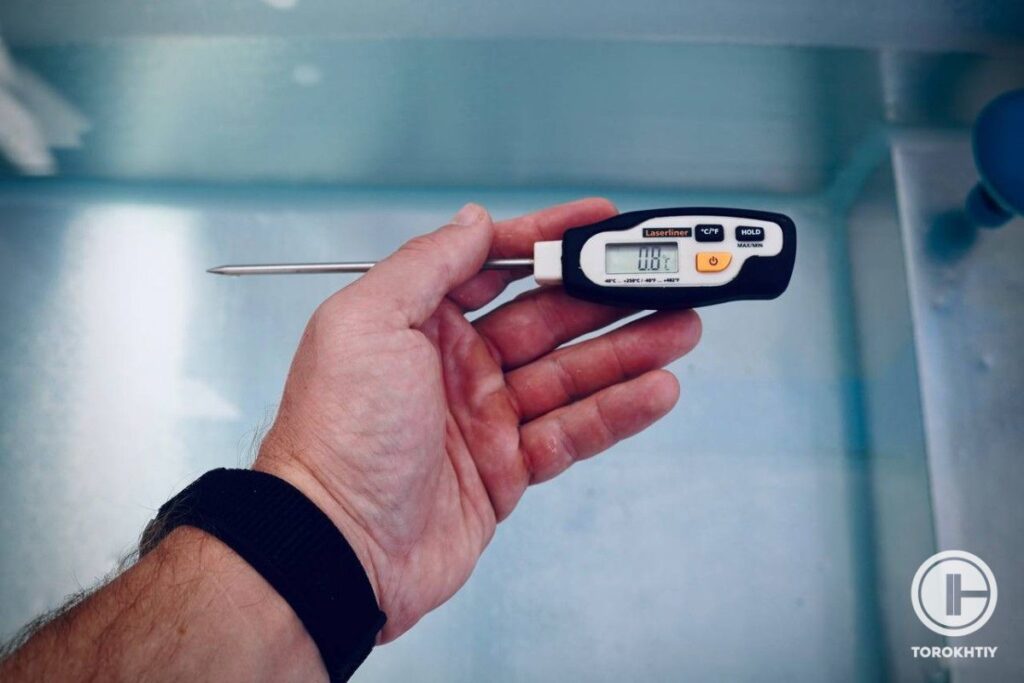
4. Nerve Damage
Numbness and tingling are the first signs of nerve damage, which can be a consequence of cold exposure. Some numbness is good if you’re after pain relief, but if you stay in an ice bath for too long, you can get nerve damage that can affect both your extremities and other areas of your body. It can even impact overall neurological function.
5. Cardiovascular Strain
Your cardiovascular system won’t thank you for not getting out of the ice bath on time. The initial cold shock and subsequent vasoconstriction can cause your heart rate and blood pressure to rise. This response is risky, especially for people with existing heart conditions because it places extra strain on the heart.
How to Define for How Long Should You Ice Bathe?
The optimal ice bath time depends on a few things. However, there are two defined ice bath exposure protocols that you should follow (brief and long exposure). And knowing which one is best for you, or your situation is advantageous to keep safe and to reap the best benefits.
The ideal duration depends on things like water temperature, your level of cold adaptation or experience, and your current comfort level – if it feels especially challenging on a given day, it’s best to cut the session short. This, of course, applies only to healthy people. If you’re dealing with a condition or an injury, talk to your doctor before deciding to give ice baths a try (or anything else that has to do with cold exposure).
1. Health State
The current state of your health also plays a role, and a pretty big one. People with cardiovascular issues or respiratory conditions should be extra careful and limit the amount of time they spend in cold water. If there are any pre-existing health conditions, it would be best to have a word with your doctor before deciding to try ice bath therapy.
2. Prior Injuries
Those with a history of injuries or musculoskeletal issues should time their ice baths with their condition in mind. Prolonged exposure to cold can worsen certain injuries, so if you’re currently recovering, you’ll have better luck with a shorter session. Again it depends… on the injury 🙂 be sure you use common sense and talk to your physio beforehand.
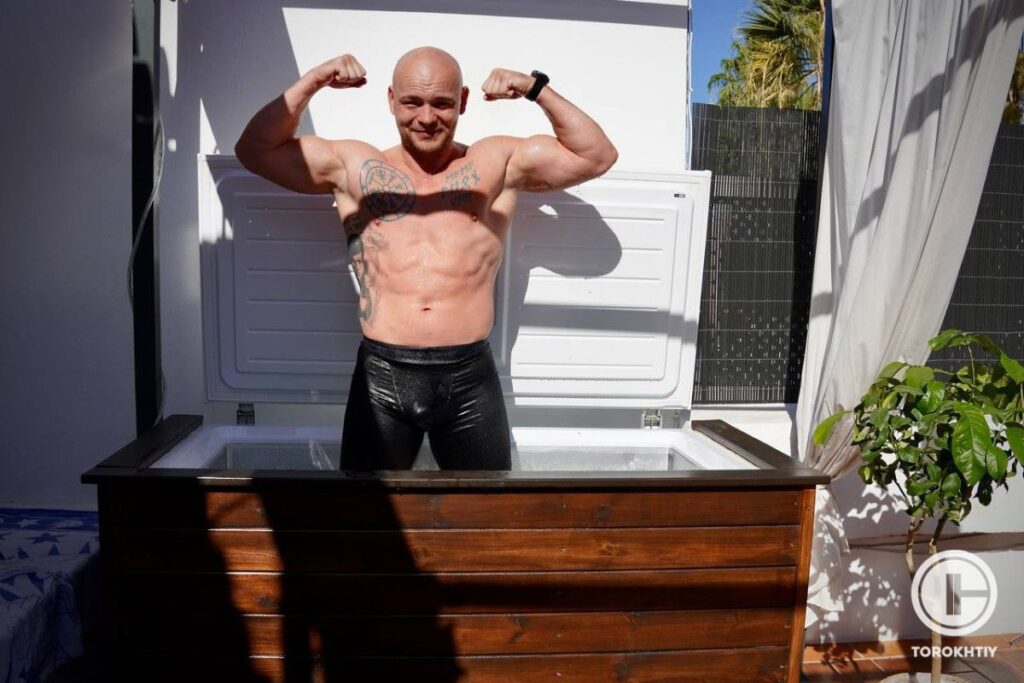
3. Fitness Level
The level of physical fitness influences how your body reacts to being exposed to cold water. Athletes and those with higher fitness levels will be able to tolerate longer ice baths because their bodies may have better stress tolerance. Beginners and people who are not used to intense physical activity will need to take shorter sessions to avoid potential strain.
4. Age
Age is another factor that can impact ice bath duration and recovery. Younger people can usually tolerate cold exposure better than older adults, so keep that in mind. Again use common sense – if you are starting your cold exposure journey, start with higher temperatures and lower level of exposure range and with time and experience, gradually increase time or lower temperature of the water.
5. Personal Comfort and Feedback
Always listen to what your body is telling you. You shouldn’t experience any extreme shivering or discomfort, and if you do, get out immediately. If you can only take 1 to 3 minutes of ice bathing (brief exposure), don’t force yourself to stay in an ice bath for 3 min if today is much harder for you from second one.
You can gradually up the amount of time you spend in it as your body gets accustomed to the cold.
Cold Therapy Tool We Recommend for Ice Bathing
Ice Barrel 300
- Dimensions: 35.5”W x 30.5”H
- Weight: 61 lbs
- Material: Recycled plastic
- Shape: Cylinder
- Installation type: Place anywhere
- Capacity: 77 gallons
- Package: Tub, lid, chiller plug, user manual, warranty
- Warranty: Lifetime
- Extra features: Built-in seat, chiller port, drainage port
- Recommended by Athletes: Brian Mazza, Brooke Wells
If you want your ice bath to be as effective as possible, you need the right tool, like the Ice barrel 300. It’s a much better option than your bathing tub – leave that for hot baths.
This ice barrel is fully insulated, easy to use, and it has a seat inside. The seat is designed to utilize the upright seated position, which will keep your core temperature stable. The seated position is not scientifically proven to be superior to a laying position, however, it is a comfortable position for an ice bath.
This barrel is made in the USA using recycled materials and it weighs 61 lbs when it’s empty. When you fill it up, its weight goes up to 700 lbs, and it holds 77 gallons of water. It’s not expensive when you compare it to some other tools in this category, and it’s covered by a limited lifetime warranty.
Positives:
Could be better:
FAQ
How Long Is It Healthy to Stay In an Ice Bath?
There are several things to consider, like the temperature of the water, your adaptation to cold, and how comfortable the ice bath feels (but keep in mind, it’s supposed to be uncomfortable). If the temperature is really low (34-37°F), you only need 1-2 minutes in the ice bath, especially if you’re new to it. If you try it with a higher temperature, say 46-48°F, you can stay in the bath for 3 minutes.
Is 5 Minutes in an Ice Bath Enough?
Yes, a 5-minute ice bath limit can be even more than enough, but the temperature of the water needs to be pretty low (46-48°F). 5 minutes can offer benefits like reduced muscle soreness and improved recovery, especially after an intense workout.
Is a 20-Minute Ice Bath Too Long?
In a brief exposure in 9°C or lower, 20 minutes will be too much. It won’t be too long if it is in accordance with the long exposure protocol (~15°C), and then it will be around the minimum amount of time you should stay in an ice bath. If you’re a beginner, anything more than 5 minutes (brief dip) will be too much.
Conclusion
Ice bath can be a phenomenal tool for recovery, but only if you time it right. Although 1-3 min in very cold water and 30-60 minutes in cold one are usually the sweet spots (depending on water temperature). Work your way up to that if you’re a beginner and don’t force yourself to do something that causes extreme discomfort. If 2 minutes is all you can handle, that’s completely fine and it’s a good starting point.
Don’t forget to get a good ice barrel, like the Ice Barrel 300, to get the most out of your ice bath.
Are you experienced in ice bathing or are you still working up the courage to give your first one a try? What duration did you start with and how long did it take you to be able to stay for 10-15 minutes in an ice bath? Do you have any tips for beginners?
We always welcome any tips, recommendations, or opinions, so leave them in the comment section.
Icing out!
References:
- “Brrr! What To Know About Cold Plunges,” Cleveland Clinic, https://health.clevelandclinic.org/what-to-know-about-cold-plunges (accessed February 5th, 2024)
- Emma Moore, Joel T. Fuller, Jonathan D. Buckley, Siena Saunders, Shona L. Halson, James R. Broatch, Clint R. Bellenger, “Impact of Cold-Water Immersion Compared with Passive Recovery Following a Single Bout of Strenuous Exercise on Athletic Performance in Physically Active Participants: A Systematic Review with Meta-analysis and Meta-regression,” Sports Medicine 52, no. 1667-1688 (2022).
- Kim Calvin “Hypothermia: A cold weather hazard,” National Institute on Aging, https://www.nia.nih.gov/news/hypothermia-cold-weather-hazard (accessed February 5th, 2024)
- Maria Dyah Kurniasari, Karen A. Monsen, Shuen Fu Weng, Chyn Yng Yang, Hsiu Ting Tsai, “Cold Water Immersion Directly and Mediated by Alleviated Pain to Promote Quality of Life in Indonesian with Gout Arthritis: A Community-based Randomized Controlled Trial,” Biological Research for Nursing 24, no. 2 (2022): 245-258.
- Yoon-Hyung Lee, Jin-Ho Yoon, Ki-Jae Song, Jae-Keun Oh, “Effects of Cool-Down Exercise and Cold-Water Immersion Therapy on Basic Fitness and Sport-Specific Skills among Korean College Soccer Players,” Iranian Journal of Public Health 50, no. 11 (2021): 2211–2218.
Why Trust Us?
With over 20 years in Olympic Weightlifting, our team does its best to provide the audience with ultimate support and meet the needs and requirements of advanced athletes and professional lifters, as well as people who strive to open new opportunities and develop their physical capabilities with us.
By trusting the recommendations of our certified experts in coaching, nutrition, dietology, and sports training programming, as well as scientific consultants, and physiotherapists, we provide you with thorough, well-considered, and scientifically proven content. All the information given in the articles concerning workout programming, separate exercises, and athletic performance, in general, is based on verified data. We ensure that you can rely on our professionals’ pieces of advice and recommendations that can be treated as personalized ones which will benefit you and fully meet your needs.
The product testing process is described in more detail here
Author: Jacek Szymanowski
Certified Nutritionist,
M.Sc.Eng. Biotechnology
Performance Architect,
Strength and Conditioning Specialist
With over 30 years of fighting experience, specialization in nutrition coaching for athletes, and expertise in metabolic health and dietary strategies, Jacek offers a comprehensive approach to optimizing your performance and well-being. Backed by a Master of Science degree in Biotechnology, Jacek remains at the forefront of scientific advancements, ensuring that his coaching is always evidence-based and up-to-date.

